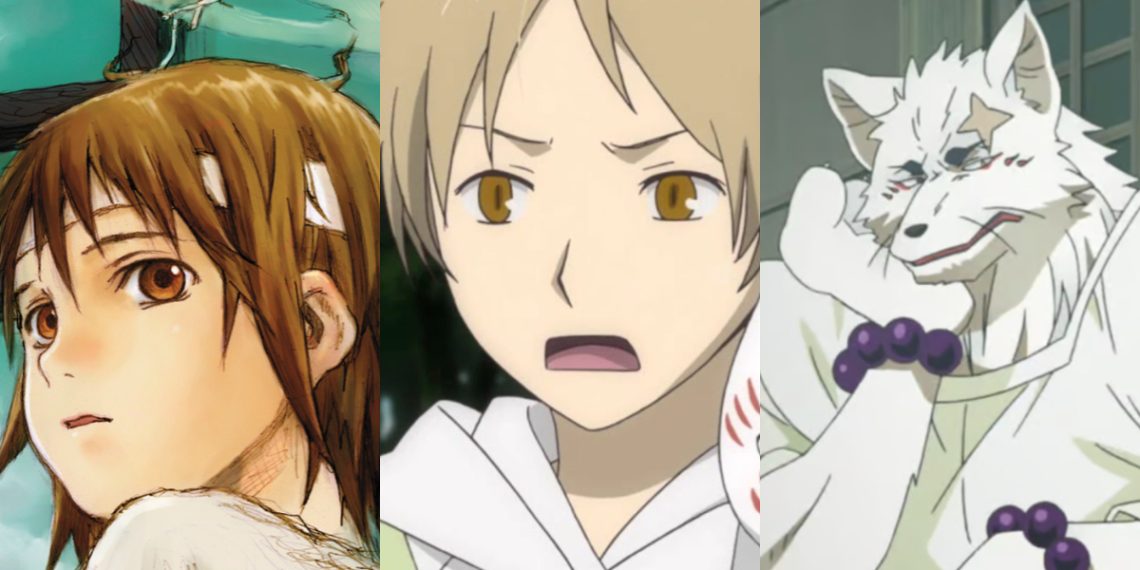Natsume’s Book of Friends holds a special place in the hearts of many, nestled comfortably within the iyashikei genre—a world dedicated to soothing souls and inviting relaxation.
This cherished series chronicles the journey of Takashi Natsume, a high school student gifted with the extraordinary ability to perceive yokai, the ethereal spirits of Japanese folklore.
His adventures revolve around encounters with these spectral beings, as he endeavors to release them from the bindings imposed by his grandmother’s past pacts.
While the premise may suggest a clash between the human world and the supernatural, Natsume’s Book of Friends opts for a different path, eschewing conflict in favor of celebrating themes of harmony and camaraderie.
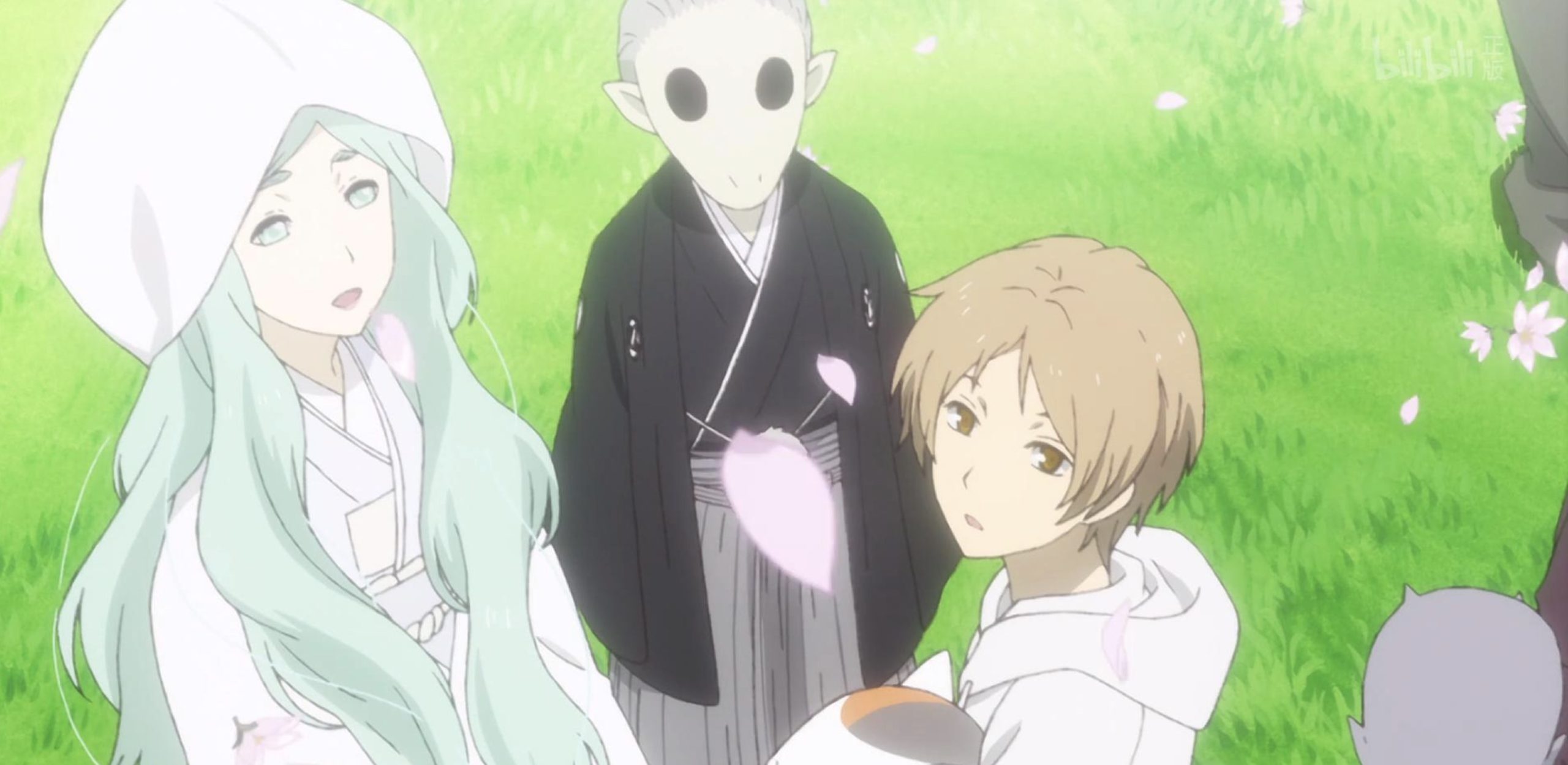
It champions the core coexistence and the beauty found in forging connections, resonating with the core values embraced by numerous iyashikei and slice-of-life narratives.
For aficionados of Natsume’s Book of Friends, these shared virtues extend to a plethora of other anime series within the same vein, each offering a tranquil oasis for the weary soul.
At its heart, Natsume’s Book of Friends beckons viewers into a world where the ordinary intertwines seamlessly with the extraordinary, where the mundane becomes magical.
It invites audiences to revel in the simple joys of existence, finding solace in the gentle rhythm of everyday life. Such anime, with their tender portrayal of human experiences and the supernatural, serve as a balm for the spirit—a comforting reminder of the inherent goodness that surrounds us.
In contemporary entertainment, Natsume’s Book of Friends stands as a witness to the enduring appeal of stories that prioritize introspection over spectacle, and depth over drama.
Its narrative is woven with threads of compassion, empathy, and understanding, offering a respite from the frenetic pace of the world outside.
For those seeking refuge from the tumult of modern life, Natsume’s Book of Friends and its kindred anime provide a sanctuary—a quiet haven where one can pause, reflect, and find solace in the gentle embrace of storytelling.
Haibane Renmei And 9 Other Anime Series That Are Similar To Natsume’s Book of Friends
Here is a list of the top 10 anime series you should watch if you loved the story of Natsume’s Book of Friends.
10. Haibane Renmei
In the amazing village of Haibane Renmei, the protagonist Rakka awakens to a peculiar existence, devoid of memories from her past life but adorned with wings and a halo. Surrounded by inhabitants equally perplexed by their circumstances, Rakka begins on a journey of self-discovery in a world shrouded in mystery.
This slice-of-life drama, interwoven with elements of intrigue, follows Rakka and her newfound companions as they grapple with the elusive concept of salvation amidst their inexplicable reality.
While the setting may amaze, it is the deeply introspective nature of the characters that truly distinguishes Haibane Renmei.
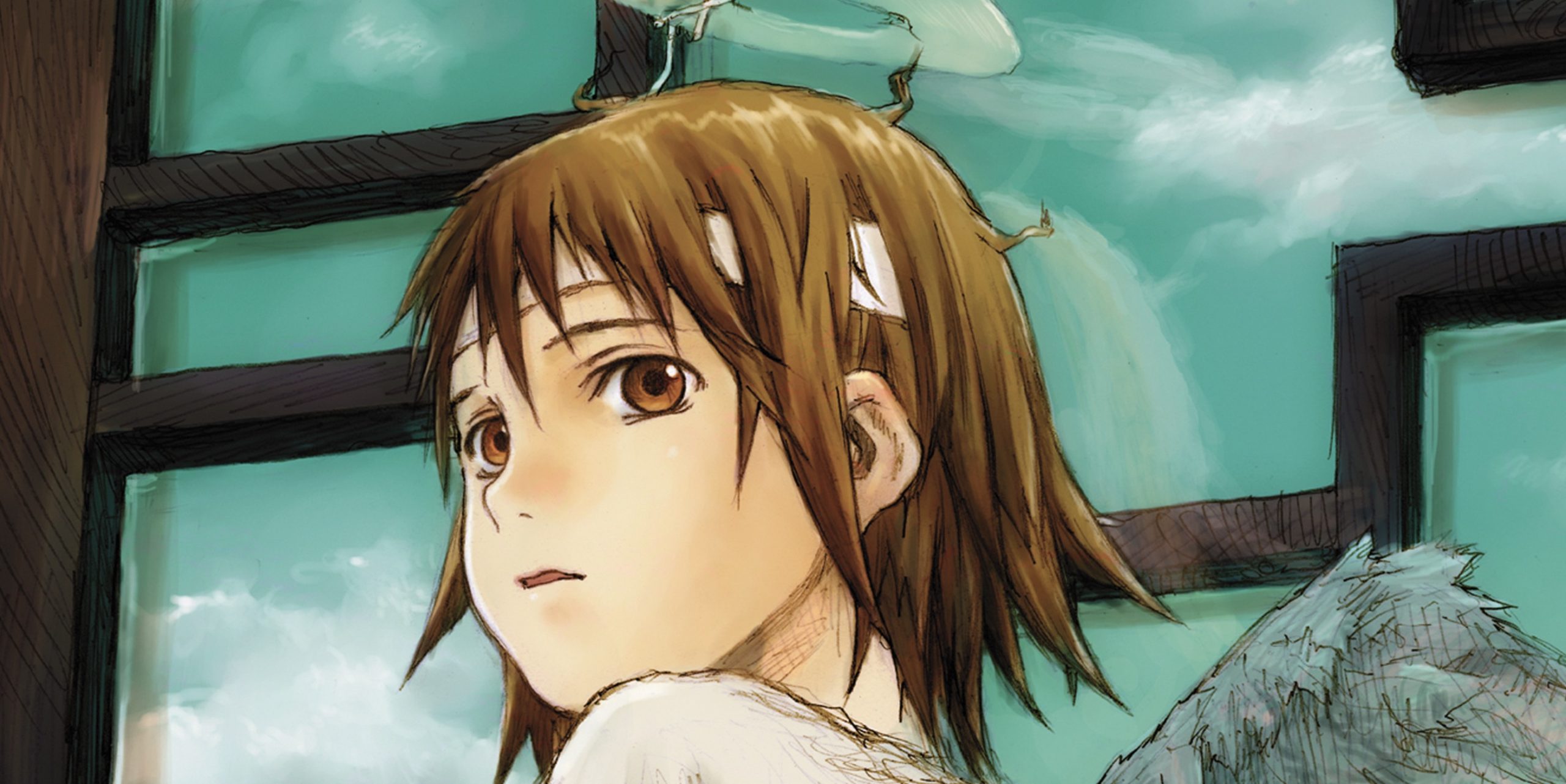
Each character undergoes a profound personal metamorphosis, inviting viewers to contemplate the core of existence and mortality. Through their individual struggles and revelations, Haibane Renmei goes into themes of identity, purpose, and the significance of one’s journey through life.
As Rakka and her companions explore the complexities of their shared world, they confront existential questions that resonate deeply with audiences.
Haibane Renmei serves as a poignant reminder of the intricacies of human experience, prompting viewers to ponder the mysteries of life and death long after the credits roll.
9. Non Non Biyori
Natsume’s Book of Friends and Non Non Biyori both epitomize the serene allure of countryside living within the iyashikei genre.
Non Non Biyori, in particular, paints a picturesque portrait of rural tranquility through its depiction of Asahigaoka village, a seemingly unremarkable locale that gradually reveals its hidden charms.
At the heart of Non Non Biyori is Hotaru, a city girl who finds herself enchanted by the idyllic simplicity of life in Asahigaoka. As she forges new friendships and immerses herself in the rhythms of rural existence, Hotaru discovers that true happiness transcends geographical boundaries.

Through the series’ gentle narrative, viewers are reminded of the myriad joys that await those who embrace the slower pace and close-knit community of village life.
Non Non Biyori celebrates the beauty of simplicity and the profound connections that can be formed amidst the tranquility of the countryside.
It serves as a poignant reminder that happiness is not contingent upon one’s surroundings, but rather on the depth of relationships and the appreciation of life’s small pleasures.
In a world often consumed by the hustle and bustle of urban living, Non Non Biyori offers a refreshing peek into the unique merits of rural escapism.
8. Barakamon
The serene ambiance sought after in iyashikei series isn’t solely reliant on the supernatural. Even in Natsume’s Book of Friends, moments of tranquility often arise from the mundane aspects of Natsume’s teenage life. Similarly, Barakamon, an iyashikei comedy, finds its magic in the ordinary.
Centered around Seishuu Handa, a conceited calligrapher banished to a rural village as punishment for his hubris, Barakamon chronicles his journey of introspection and growth.

Initially resistant to the abrupt change of scenery, Handa’s time on the Goto Islands introduces him to a cast of endearing characters, including the spirited young girl Naru. Witnessing Handa’s evolution through his interactions with the villagers proves to be a heartwarming and uplifting experience.
Despite its grounded setting, Barakamon weaves a tale brimming with charm and warmth, reminding viewers of the inherent beauty found in the simplicity of everyday life.
As Handa explores the nuances of rural existence and forms meaningful connections with those around him, the series exudes a sense of quiet enchantment that resonates long after the final episode.
Barakamon exemplifies the core of iyashikei through its celebration of personal growth, community, and the transformative power of human connection.
Through its gentle humor and heartfelt storytelling, the series invites audiences to find solace and inspiration in the ordinary, proving that magic can be found in even the most unassuming of places.
7. Into the Forest of Fireflies’ Light
While tales of human encounters with the supernatural, particularly yokai, are abundant in anime and manga, few explore the potential for a positive and loving connection between the two worlds.
Into the Forest of Fireflies’ Light stands out as a rare gem in this regard, chronicling the blossoming bond between a human girl named Hotaru and a forest spirit named Gin, cursed to vanish forever upon human touch.
In this enchanting tale, the delicate relationship between Hotaru and Gin uncovers gradually, offering a heartwarming exploration of empathy and understanding across boundaries of existence.
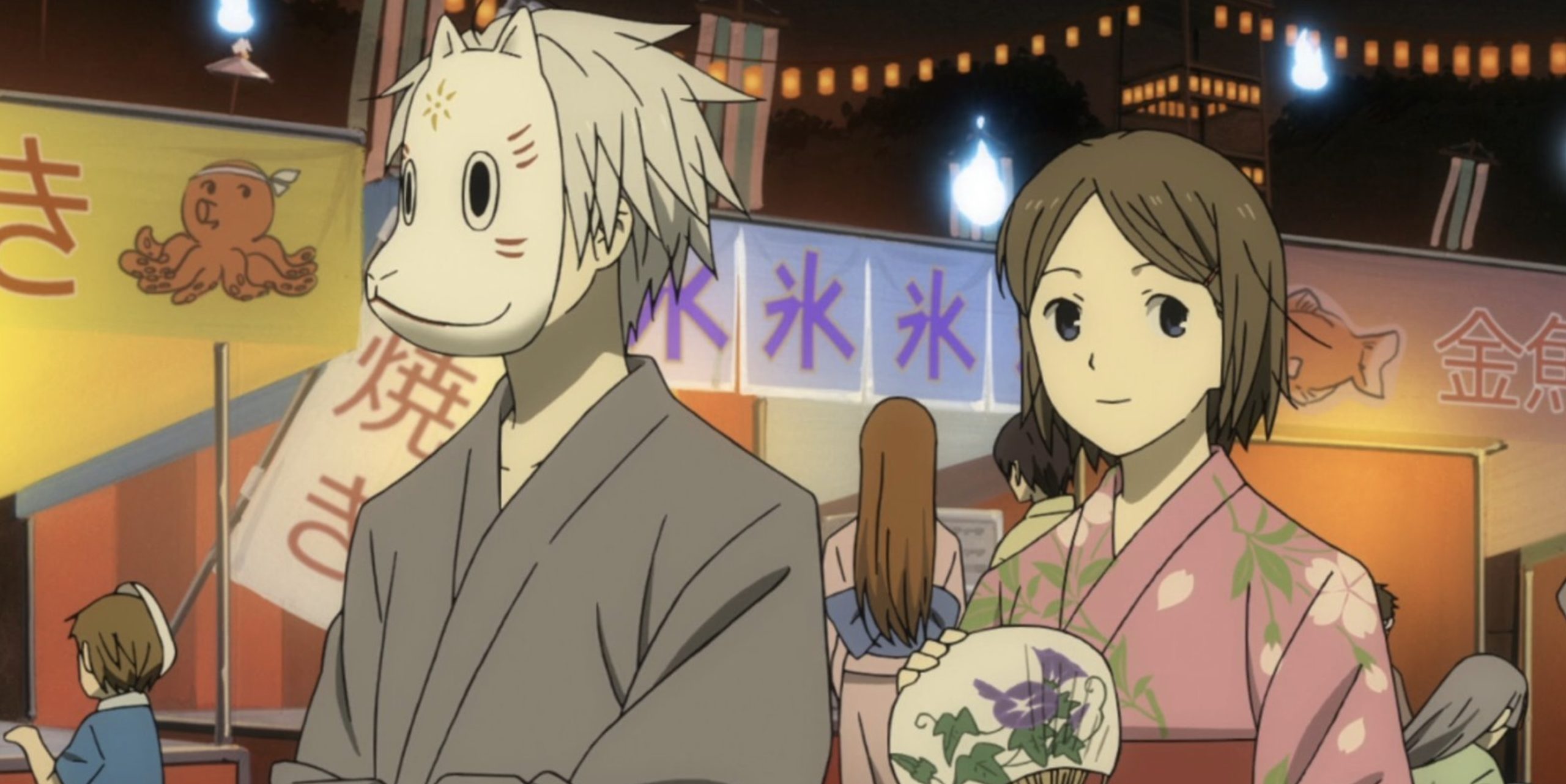
As Hotaru grapples with the complexities of her connection to Gin and the mystical world he inhabits, viewers are drawn into a narrative rich with emotion and resonance.
Notably, Into the Forest of Fireflies’ Light shares more than thematic similarities with Natsume’s Book of Friends—it is penned by the same author, Yuki Midorikawa. This shared creative vision infuses the film with a familiar charm and aesthetic, making it an amazing experience for fans of Midorikawa’s storytelling.
For aficionados of Natsume’s adventures with yokai, Into the Forest of Fireflies’ Light offers a poignant companion piece, enriching the supernatural encounters with its own unique tale of love and acceptance.
With its evocative storytelling and enchanting visuals, this anime film is indeed a must-watch for anyone amazed by the mystical allure of Natsume’s world.
6. Girls’ Last Tour
Despite its reputation as a soothing and restorative genre, iyashikei anime seldom shies away from delving into profound and existential themes.
Natsume’s Book of Friends and other standout examples of the genre often tackle weighty topics, adding layers of depth to their narratives. Similarly, Girls’ Last Tour embraces a somber backdrop of post-apocalyptic desolation, where a sense of hopelessness looms large.
In the bleak remnants of a once-vibrant city, the show’s protagonists, Chito and Yuuri, explore the ruins with a steadfast determination not to succumb to despair.

Their journey through the desolate wasteland is anything but a somber affair, however, as Girls’ Last Tour radiates with an enduring sense of optimism.
Despite the scarcity of resources and the absence of civilization, Chito and Yuuri find solace in each other’s company and the simple pleasures that surround them.
Through their shared experiences and the bond forged between them, Girls’ Last Tour uncovers as an uplifting odyssey—a witness to the resilience of the human spirit in the face of adversity.
As Chito and Yuuri traverse the remnants of a fading world atop their trusty motorbike, they discover that even amidst the ruins, moments of joy and wonder await those who dare to seek them out.
Girls’ Last Tour serves as a poignant reminder that even in the darkest of times, there is still light to be found. Through its portrayal of two young girls exploring the aftermath of a cataclysmic event, the series celebrates the indomitable power of friendship and the capacity for hope to flourish in even the most unlikely of places.
5. Spice and Wolf
When considering medieval fantasy anime, many immediately recall gritty, action-packed series like Berserk or Claymore. However, Spice and Wolf diverge from these genre norms, offering a refreshing departure into the serene rhythms of everyday life for a traveling merchant and his otherworldly companion.
At the heart of Spice and Wolf is Kraft Lawrence, a merchant with aspirations of establishing his own shop. His path crosses with that of Holo, a wise wolf deity, in a quaint town.
Together, they begin on a journey through the countryside, delving into the intricacies of medieval commerce. In a manner akin to Natsume’s Book of Friends, Spice, and Wolf incorporates supernatural elements, with much of its allure stemming from the evolving relationship between a mortal man and an immortal being. In the case of Lawrence and Holo, their connection blossoms into an amazing love story.

Unlike its more violent counterparts, Spice and Wolf eschews brutality in favor of immersing viewers in the nuances of trade and economics within a medieval setting. Through the lens of Lawrence and Holo’s travels, audiences are treated to rich economic intrigue and interpersonal dynamics.
The series finds beauty not in sword clashes and battles, but in the quiet moments shared between its two protagonists as they explore the complexities of their world.
Spice and Wolf serves as a witness to the versatility of the medieval fantasy genre, demonstrating that storytelling within this world can extend beyond traditional tropes of violence and conflict.
Its gentle exploration of commerce, accompanied by the blossoming relationship between its human and divine leads, offers a refreshing and contemplative take on the genre—a departure from the expected, yet equally compelling in its own right.
4. Kino’s Journey
While not typically categorized as an iyashikei anime, Kino’s Journey shares striking similarities with many beloved series within the genre.
Centered around exploration, the anime follows the journey of Kino and her sentient motorbike, Hermes, as they traverse diverse countries and encounter a multitude of experiences, all while maintaining a steadfast commitment to neutrality and non-attachment.
Each episode of Kino’s Journey reveals a new and unconventional scenario, offering poignant commentary on the complexities of the human condition.
Through its episodic format, the series goes into a myriad of dichotomies and philosophical dilemmas, inviting viewers to contemplate the intricacies of morality, society, and existence itself.

What sets Kino’s Journey apart is its non-judgmental and contemplative approach to storytelling, akin to the psychological angles often found in iyashikei anime.
Rather than imposing moral absolutes or passing judgment on its characters, the series encourages introspection and critical reflection, challenging viewers to consider the myriad perspectives that shape our understanding of the world.
Kino’s Journey serves as a thought-provoking exploration of the human experience, offering a meditative journey through a diverse ideologies and perspectives.
While it may not fit neatly into the traditional mold of iyashikei, its ability to inspire introspection and contemplation aligns closely with the genre’s underlying ethos of healing and tranquility.
3. Gingitsune: Messenger Fox of the Gods
Gingitsune: Messenger Fox of the Gods stands out as one of the closest counterparts to Natsume’s Book of Friends, offering viewers a delightful and heartwarming slice-of-life experience that prioritizes uplifting emotions above all else.
At its core lies Makoto, a young girl blessed with the inherited ability to perceive spirits, and her steadfast companion, Gintarou, a fox spirit entrusted with protecting the local temple.
In line with the core of iyashikei anime, Gingitsune forgoes overarching storylines and dramatic conflicts in favor of gentle, episodic narratives.
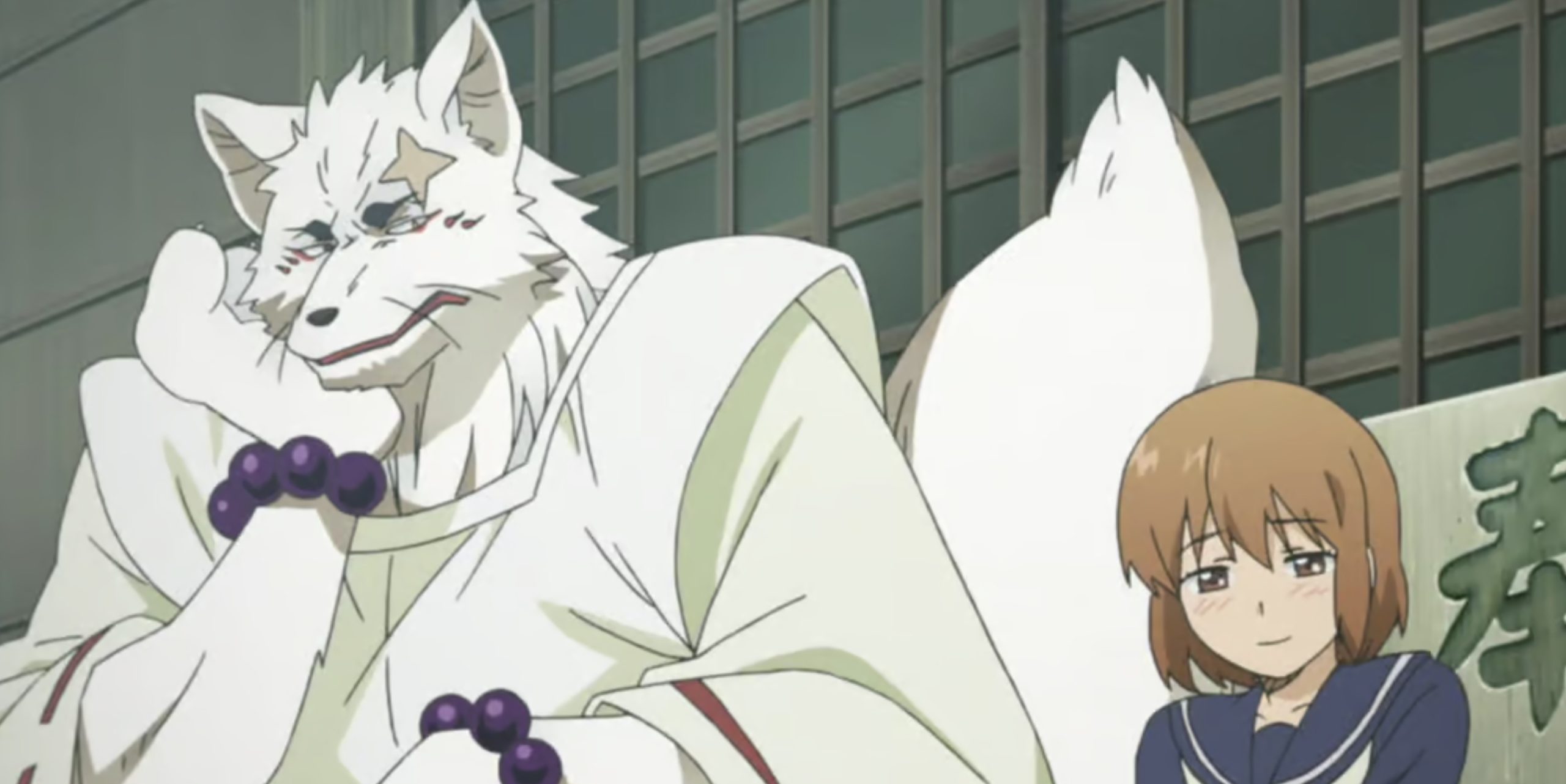
Makoto and Gintarou’s adventures revolve around aiding the townsfolk and exploring the enchanting spirits, punctuated by moments of everyday wonder and serene contentment.
Much like its genre peers, Gingitsune exudes a sense of tranquility and positivity, inviting viewers to immerse themselves in the simple joys of life.
Whether observing the changing seasons, partaking in traditional rituals, or forging meaningful connections with others, the series celebrates the beauty found in life’s quiet moments and the bonds that unite us.
Through Makoto and Gintarou’s endearing interactions and the tender exploration of their surroundings, Gingitsune offers a respite from the hustle and bustle of everyday life—a gentle reminder of the magic that surrounds us, waiting to be discovered in the most unexpected of places.
2. Mushi-Shi
Mushishi stands as a rare gem within the iyashikei anime, transcending the confines of its genre much like Natsume’s Book of Friends. This amazing series, perfected the art of the “healing anime” formula, taking viewers on a mesmerizing journey alongside the amazing protagonist, Ginko.
As Ginko travels through the Japanese countryside, he unravels the mysteries surrounding Mushi, supernatural creatures that coexist with humans in secrecy.
Along the way, audiences are treated to breathtaking vistas of rural Japan, immersing themselves in the serene beauty of the storyline Ginko traverses.
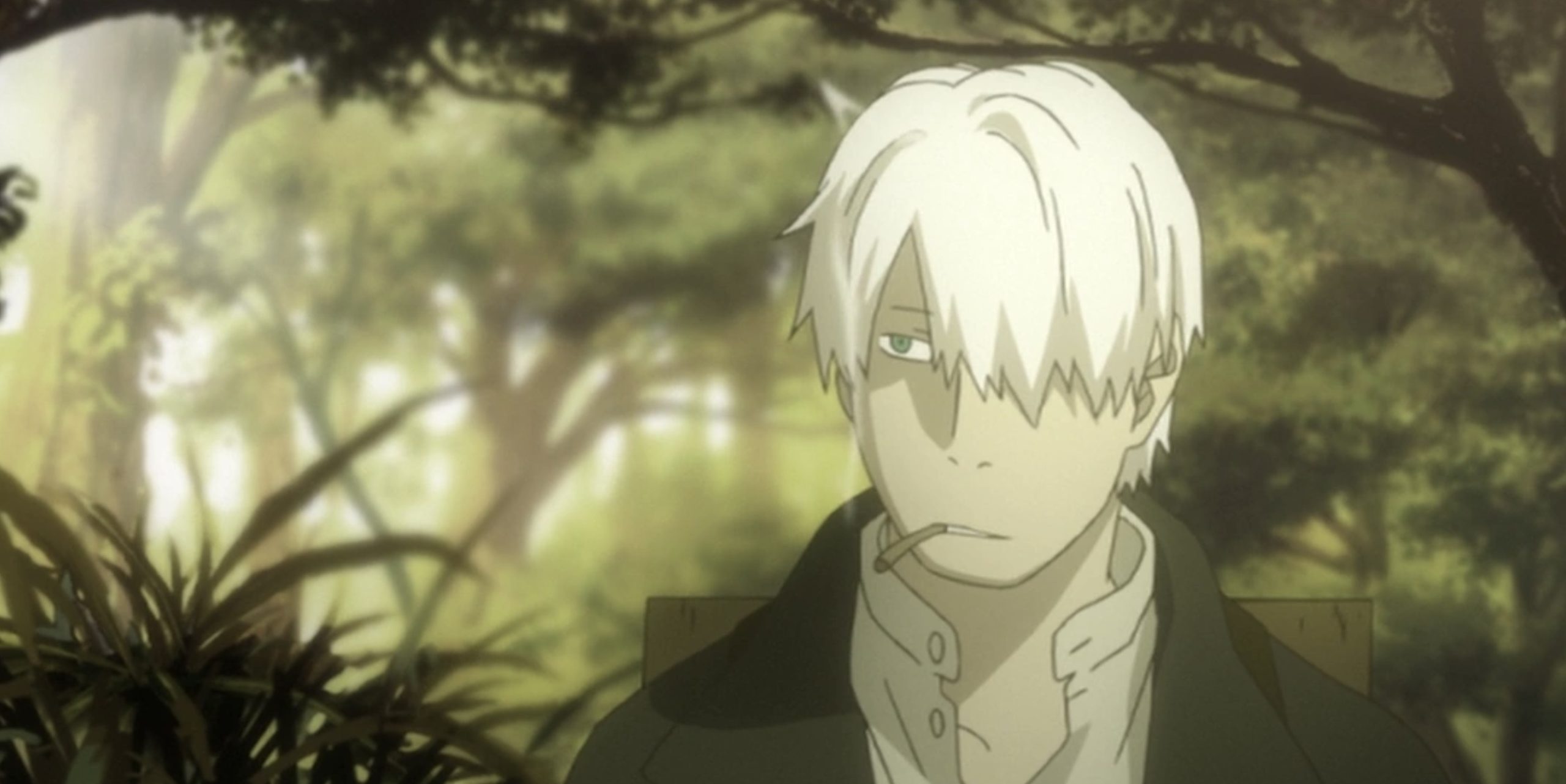
However, what truly sets Mushishi apart are its vignettes—intimate tales that explore the intricate relationship between Mushi and the individuals they inadvertently impact.
These vignettes, ranging from heartwarming to tragic, and unexpectedly introspective, offer profound insights into the human condition.
Each instance of the supernatural bleeding into the ordinary world carries a meaningful lesson, carefully woven into the fabric of the narrative. Through Ginko’s encounters and resolutions, viewers are invited to contemplate themes of acceptance, resilience, and the delicate balance between humanity and nature.
Mushishi is more than just a series—it’s a poignant exploration of the human experience, wrapped in the guise of supernatural intrigue. Its ability to seamlessly blend elements of the mystical with profound introspection raises it to a world beyond the confines of its genre, leaving a lasting impression on all who begin on its transcendent journey.
1. Aria the Animation
Aria the Animation stands as the quintessential classic of slice-of-life iyashikei, seamlessly blending the genre’s cherished traditions with a wholly unique setting.
Taking place in Neo Venezia, a city of unparalleled natural beauty nestled within a futuristic spacefaring technology, the series presents viewers with an amazing juxtaposition of rustic charm and technological marvels.
At the heart of the series are its protagonists, who serve as guides, inviting travelers to immerse themselves in the city’s splendor and tranquility.
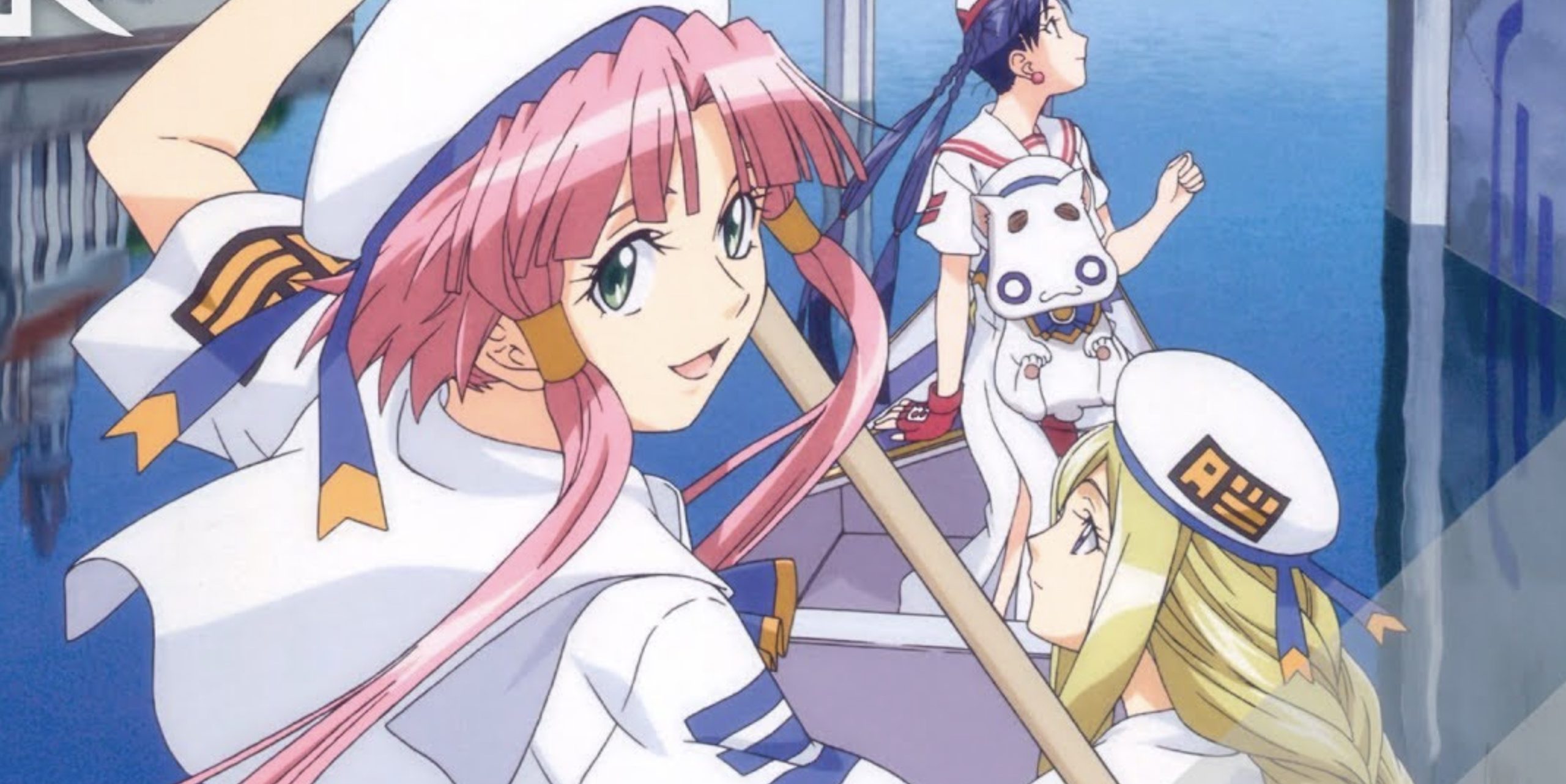
Aria the Animation has rightfully earned its status as a cult classic, thanks to its poignant exploration of nature’s wonders and the profound relationships that blossom among its characters.
Through its evocative storytelling and richly detailed world-building, the series transcends the boundaries of traditional slice-of-life fare, offering viewers a deeply immersive and emotionally resonant experience.
Aria the Animation is a witness to the enduring appeal of iyashikei anime, inviting audiences to slow down, savor the beauty of the natural world, and cherish the connections forged along life’s journey.
Its legacy as a beloved classic endures as a witness to its ability to evoke a sense of wonder and tranquility in the hearts of viewers.
Honorable Mentions
The Unforeseen Guest

Kanojo wa Boku no Taieki de Ugoiteiru Phase. 04



